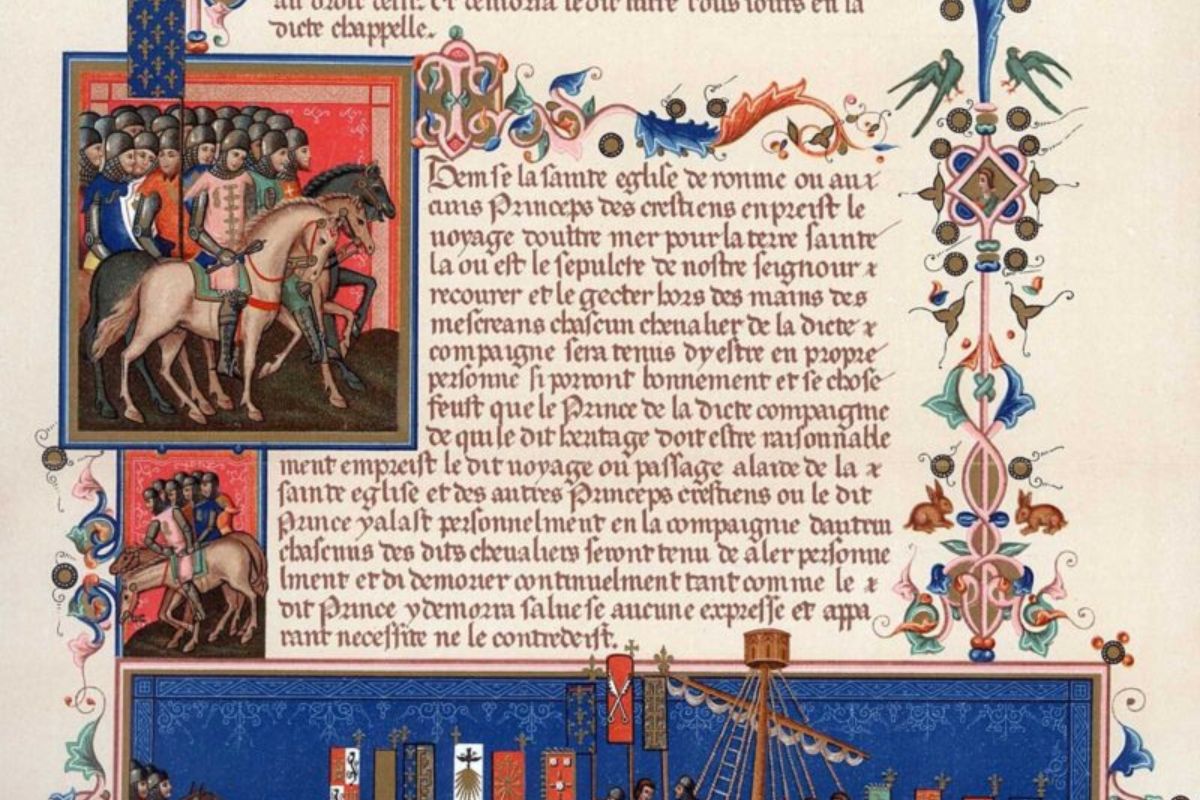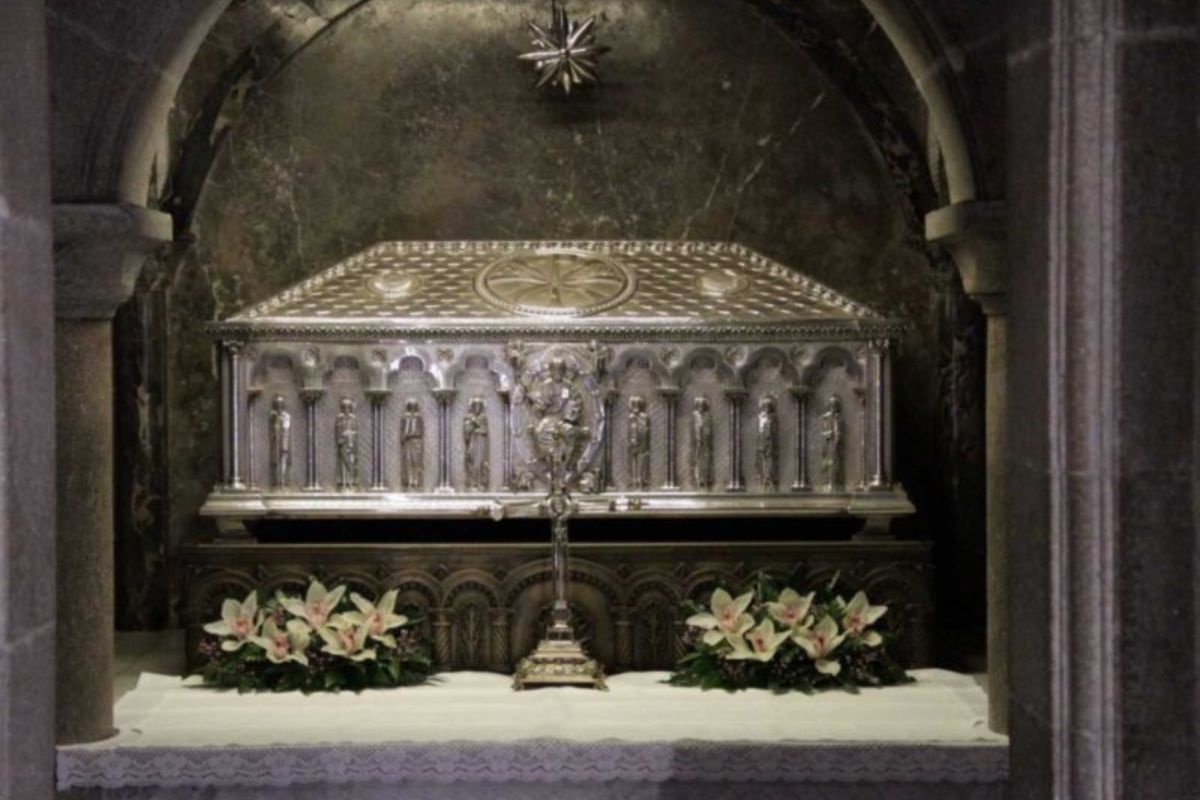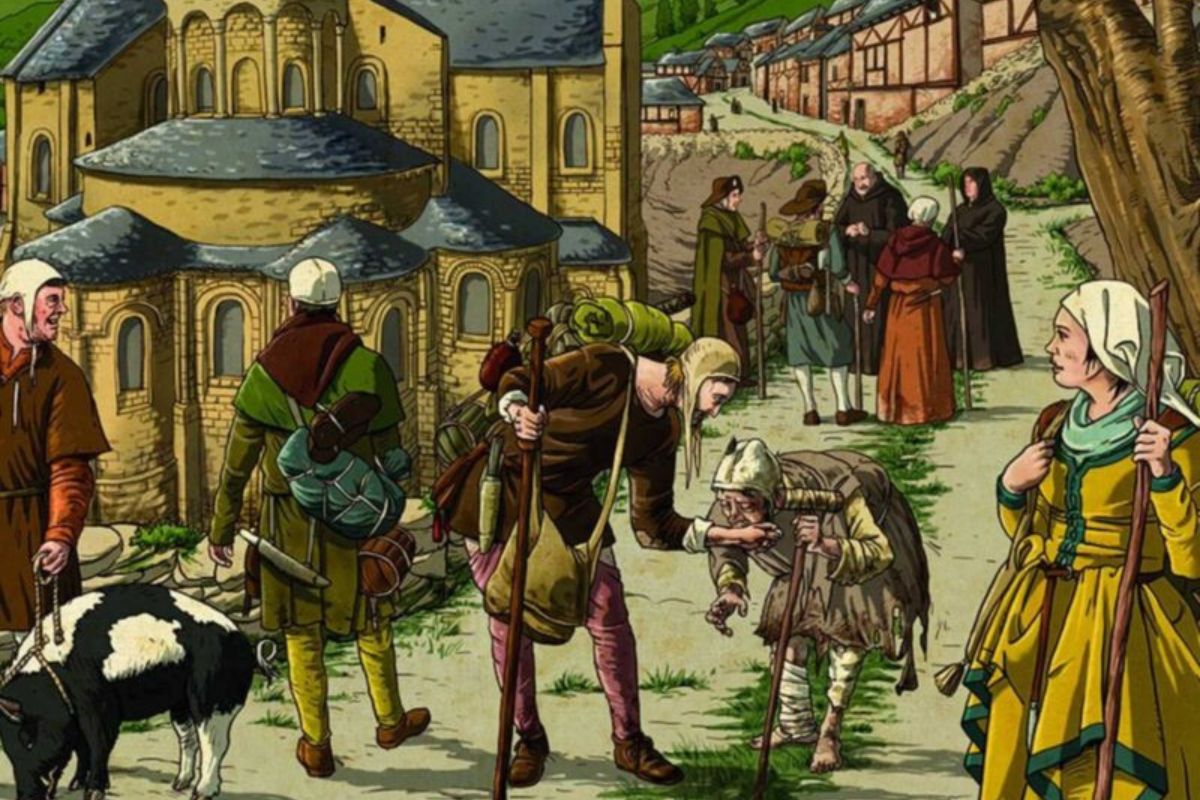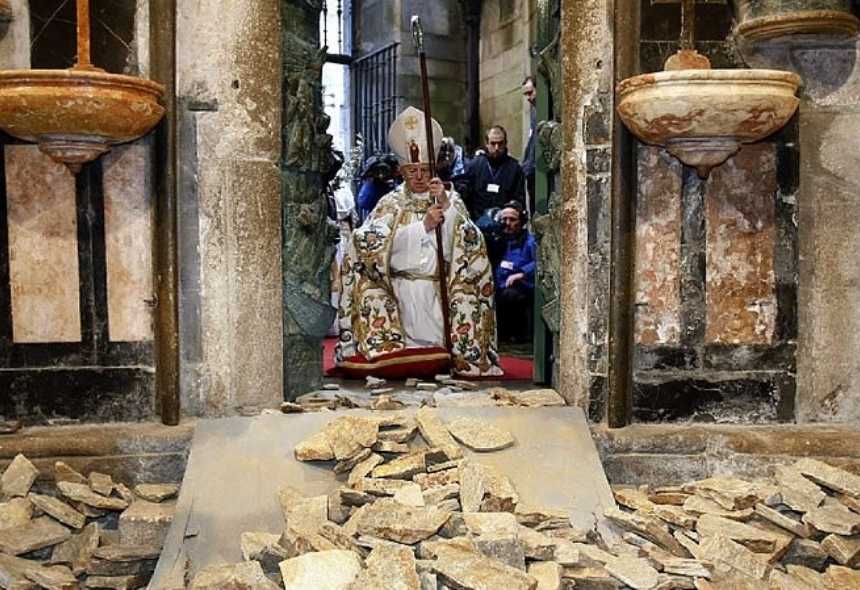The term “indulgence” is defined by the Royal Spanish Academy (RAE) in its first meaning as “ease in forgiving or concealing faults or in granting graces.” In other words, it refers to the capacity that individuals or institutions have to forgive. In a religious context, the Plenary Indulgence is a total forgiveness of the temporal penalties imposed by the Catholic Church on its sinful faithful, which they endure due to the sins committed.
The Plenary Indulgence in the Jacobean Holy Year
This forgiveness is fully, regularly, and guaranteedly obtained during each Jacobean Holy Year or Compostela Jubilee, celebrated whenever the saint’s day, July 25th, coincides with a Sunday. While indulgences are granted during specific and regular periods, that is, during each holy year, ecclesiastical authority can propose exceptional holy years, as occurred in 2016 with the Jubilee Year of Mercy or the extension of the Holy Year from 2021 to 2022 following the Covid pandemic, both proclaimed by Pope Francis.
The History of This Act of Forgiveness
The historical antecedent of this act of forgiveness traces back to Jewish tradition and its jubilee years, which sought purification and the return to a natural and balanced state of things, in other words, to restore man to the original innocence with which he was conceived by God. In short, it was about a rebirth.
In Christian tradition, we must go back to the 11th century, when these acts of forgiveness were not granted because someone had gone on a pilgrimage or it was a holy year, a celebration that did not yet exist at the time. Indulgences were originally granted by the will and initiative of the popes, motivated by a good deed done by someone or a group; for example, the one granted by Pope Urban II in 1095 to those who died on the way to the First Crusade in the Holy Land. The oldest known indulgence, offered by Pope Alexander II in 1063, was also motivated by the struggle against the Muslims.

Old document about the plenary indulgence
The First Plenary Indulgences: Rome and Santiago de Compostela
Traditionally, plenary indulgences were established with the creation of holy years. In Rome, in 1300, Pope Boniface VIII inaugurated the first Roman Jubilee for pilgrims journeying to Rome, granting generous forgiveness. In Santiago de Compostela, in the early 15th century, the first Jubilee for Jacobean pilgrims was instituted. However, in 12th-century Santiago de Compostela, the papacy already granted automatic indulgence to pilgrims who died in the city, even without it being a holy year. Moreover, the bold Archbishop Diego Gelmírez extended this indulgence to those who fought against the Muslims.
As we can see, in some cases, it seems to be a form of compensation, a kind of reward to the faithful for services rendered to the Church. Another motivation for granting plenary indulgences could be their attractive effect, encouraging the faithful to travel and visit holy places. In the case of Santiago de Compostela, with the decline of pilgrimages from the 16th century onwards, indulgences somewhat promoted the arrival of pilgrims to the city, reviving traffic on the various routes to Compostela. It can be said that, thanks to the plenary indulgence, the tradition of pilgrimage has endured.
And today, how do you get it?
To obtain the plenary indulgence of Santiago de Compostela, it is essential to have a sincere intention to avoid sinning again and to fulfill the following conditions:
- Visit the Tomb of the Apostle on any day during the holy year.
- Pray with sincerity and devotion, reciting the Creed, the Our Father, or any other prayer.
- Pray for the intentions of the pontiff.
- Confess, attend Mass, and receive Communion. These last requirements can be fulfilled within fifteen days before or after visiting the Tomb.
These conditions apply to all faithful individuals, pilgrims, and even the deceased.

Tomb of the Apostle Santiago
Many people mistakenly believe that to obtain the plenary indulgence, it is essential to fulfill certain requirements, such as entering through the Holy Door of the Cathedral, embracing the seated statue of Saint James the Apostle in the main altar, or placing hands on the central pillar of the Portico of Glory. Some even think that walking one of the official routes of the Camino de Santiago is necessary.
Nothing could be further from the truth. These are rituals created by tradition and custom, but they are not approved by the Church, even though they are quite popular among tourists in Santiago de Compostela.
Other Indulgences
“We must always forgive, remembering that we ourselves have needed forgiveness. We need to be forgiven much more often than to forgive.” Pope John Paul II emphasized the importance of forgiveness, and indeed, there are other types of indulgences. Let’s explore them.
Plenary indulgences can be obtained in non-jubilee or holy years on the following dates:
- Every July 25th, on the feast day of Saint James.
- Every December 30th, the date of the transfer of Saint James’ remains to Galicia.
- Every April 21st, when the consecration of the current basilica in 1211 is celebrated.
Additionally, any pilgrim to Santiago who has passed away on the Camino, regardless of the time and place, is granted this indulgence.

Image of ancient pilgrims in search of the Plenary Indulgence
Partial indulgences, as opposed to plenary ones, also exist, as well as indulgences granted by pilgrimage centers other than Santiago de Compostela and Rome. For example, Santo Toribio de Liébana in Cantabria, Caravaca de la Cruz in Murcia, or Santiago de los Caballeros de Gáldar in Gran Canaria. All must adhere to the guidelines set by the Code of Canon Law.
Ah! And did you know that in Lugo, at its Cathedral of Santa María, you can obtain the Plenary Indulgence any day of any year?
A complete pilgrimage
If you wish, you can obtain your plenary indulgence, and combining it with a pilgrimage to Santiago, the experience can be a perfect culmination for your journey. The next Holy Year Jacobean will be in 2027, and we will be delighted to help you achieve it.
Ultreia et suseia!












An Indulgence, whether Plenary or Partial, remits all (plenary) or some (partial) of the punishments in this world or the next (in Purgatory) due to FORGIVEN sins. After a sin is forgiven by Almighty God, although the guilt is wiped away, the punishment is still due. These punishments are not decided by the Church as this article wrongly states; rather, the punishments are decided by God. Furthermore, no one can be absolutely certain of gaining a Plenary indulgence because one of the requirements is total detachment from all sin, and this is difficult. So even if you have satisfied the requirements of receiving Absolution in sacramental Confession, received Holy Communion, prayed for The Pope’s intention and, of course performed the actual “Work” pertaining to the indulgence (in this case visiting the tomb of St James in Compostela on a certain day or during a Holy Jubilee year) can you be absolutely sure that, at the time of doing these things you were absolutely and completely unattached to all sin, even venial sin? Only God knows if our efforts were sufficient to gain the Plenary Indulgence on offer. If our efforts were not good enough in the eyes of God then the indulgence becomes Partial. The explanation of the Catholic Church’s current teaching on Indulgences is not really very well explained in this article.
Hello!
Thanks for your contribution!
What you’ve shared is very interesting. We will review and cross-check the information provided with new sources on the topic to ensure we have the most accurate information. We really appreciate your input and remain at your disposal for any further questions or comments.
Kind regards!